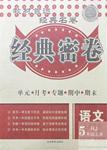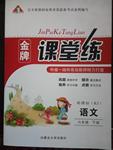题目内容
The mental aspect of athletics is underrated. The common expression, “athletics are 90 percent ____ and 10 percent physical,” is often used by coaches, and stresses that mindsets make a huge ____ in competitions.
“The physical aspect of the sport can only take you ____ ,” said Olympic gold medal-winning gymnast Shannon Miller during an interview with the Dana Foundation. “The mental aspect has to ____ , especially when you’re talking about the best of the best. In the Olympic games, everyone is talented. Everyone ____ hard. Everyone does the work. What ____ the gold medalists from the silver medalists is simply the mental game.”
Many athletes have used the technique of mental imagery, or ____ , to perform at their best. Research on the brain patterns of ____ found that the patterns activated when a weightlifter lifted heavy weights were activated ____ when they simply imagined lifting and some studies have suggested that mental ____ can be almost as effective as physical training. One study, published in the Journal of Sport & Exercise Psychology in 1996, found that ____ weight lifting caused ____ changes in muscle activity.
“Mental imagery ____ many cognitive (认知的) processes in the brain: motor control, attention, perception, planning, and memory,” researcher Angie LeVan wrote in Psychology Today. “So the ____ is getting trained for actual performance during visualization. It’s been found that mental practices can enhance motivation, increase confidence, improve motor performance and ____ your brain for success.”
____ visualizing is more than just thinking about an upcoming event. ____ athletes use visualization, they truly feel the event taking place in their mind’s eye.
“During visualization, she incorporates (整合) all of her ____ into the experience,” sports psychologist Dr JoAnn Dahlkoetter wrote in a blog post on The Huffington Post ____ a speed skater she works with. “She feels her forefoot pushing off the track, she hears her skating splits, and she sees herself racing ahead of the competitors. She experiences all of the elements of her race ____ before executing (完成) her performance.”
1.A. lucky B. intelligent C. mental D. strategic
2.A. difference B. importance C. improvement D. challenge
3.A. so long B. so far C. so much D. so high
4.A. turn on B. show off C. take up D. set off
5.A. thinksB. moves C. runs D. trains
6.A. breaksB. pushes C. decidesD. distinguishes
7.A. activation B. visualization C. motivation D. perception
8.A. athletes B. gymnasts C. weightlifters D. skaters
9.A. regularly B. normally C. finally D. similarly
10.A. connection B. practice C. performances D. directions
11.A. imagining B. considering C. reviewing D. dreaming
12.A. few B. usual C. actual D. strange
13.A. impacts B. increases C. slows D. follows
14.A. brain B. body C. attention D. memory
15.A. help B. apply C. useD. prepare
16.A. Though B. But C. Thus D. Otherwise
17.A. Unless B. After C. When D. Until
18.A. observations B. spirit C. determination D. senses
19.A. to B. for C. about D. with
20.A. in surprise B. in detail C. on time D. for example
1.C
2.A
3.B
4.A
5.D
6.D
7.B
8.C
9.D
10.B
11.A
12.C
13.A
14.A
15.D
16.B
17.C
18.D
19.C
20.B
【解析】
试题分析:文章介绍对运动员来说精神的锻炼和身体的锻炼一样重要,为了更好的发挥,运动员可以运用想象来体验比赛的过程。
1.
2.
3.
4.
5.
6.
7.
8.
9.
10.
11.
12.
13.
14.
15.
16.
17.
18.
19.
20.
考点:考查科普类完型填空

 经典密卷系列答案
经典密卷系列答案 金牌课堂练系列答案
金牌课堂练系列答案 三新快车金牌周周练系列答案
三新快车金牌周周练系列答案阅读下列短文并根据所读内容在文章后表格中的空格里填入最恰当的单词,每空格1词(共10个小题;每小题1分,满分10分)
Zebras have their own bug repellent(驱虫剂)?
Eww bugs! They are so annoying! We humans are lucky that we can apply repellents to avoid nasty bites. But what’s an animal to do? They have no choice but to spend their days shooing them off with their tails, unless, of course, they are zebras, who apparently have their own automatic repellent--- their striped skin!
Scientists had originally thought that the reason why the animal had developed the black and white lines was to help protect itself from predators in the African savannah, because the stripes make it difficult to single out one zebra that is traveling with a herd.While that may be true, the theory has never been tested or proven. Now the experts have another---that the stripes have evolved to repel the annoying horse flies that not only feed off their blood, but also, transmit dangerous germs into the bodies of these innocent animals.
The study was performed by a team of Swedish scientists. One of the clues that got them thinking along these lines was the fact that darker horses got bitten more often than light-colored or white ones.
The fact that zebras are born black and only develop strips as they grow older made the scientists theorize that the stripes may be something the animals have developed to make themselves less attractive to flies.
To test if this may be the case, they painted some boards at a horse-infested horse farm in Budapest with patterns of black and white stripes of varying widths and applied a layer of glue on them. What they noticed was that the places where the black and white stripes were at their narrowest (similar to what zebras have) attracted the fewest flies. They achieved similar results when they painted horses with black and white zebra-like stripes.
While the research are not sure why this may be the case, they believe it may be something to do with the way insects operate---horseflies are attracted to horizontally polarized light(偏振光); since white does not reflect it, white horses are luckier than black ones. But zebras seem to be the luckiest of all. When the researchers measured the polarized light reflected from real zebra skins, they found that it matched light patterns that were the least attractive to horseflies.
While this theory does make logical sense, nobody is 100 percent sure that it is really true, given that it has never been tested on a real zebra. If it is true, it does raise the question of why a horse, a close relative of the zebra has failed to develop stripes. The researchers believe that this could be because there are more horseflies in Africa, where zebras reside, then anywhere else in the world.
Title | Zebras have their own bug repellent? | |
Reasons for zebras developing their strips | Original belief | With the black and white lines, one zebra is difficult to single out while traveling with a herd, thus ___1.___ it from its enemies. |
New theory | Zebras, residing in Africa where there are most horseflies in the world ,have developed strips to avoid being___2.____ . | |
A study | Researchers | A team of scientists from ___3.____ |
____4.____ | To test if strips are developed to make zebras less attractive to flies. | |
Clues | *White or light-colored horses are less __5.___ to get bitten than dark ones. *Zebras develop strips as they grow older though born black . | |
Method | *Some boards at a horse farm are painted with patterns of black and white stripes variously ___6.___ , a layer of glue applied on them *Measured the polarized light reflected from real zebra skins | |
_____7.___ | *The places where the black and white stripes were similar to the ___8.___zebras have attracted the fewest flies *Strips of zebras matched light patterns that were the least attractive to horseflies | |
Principle of zebras’ black and white strips repelling the flies | Horizontally polarized light, which white does not reflect, ____9.___ to horseflies.
| |
Conclusion | ____10.___tested on real zebras, the theory isn’t definitely true. | |